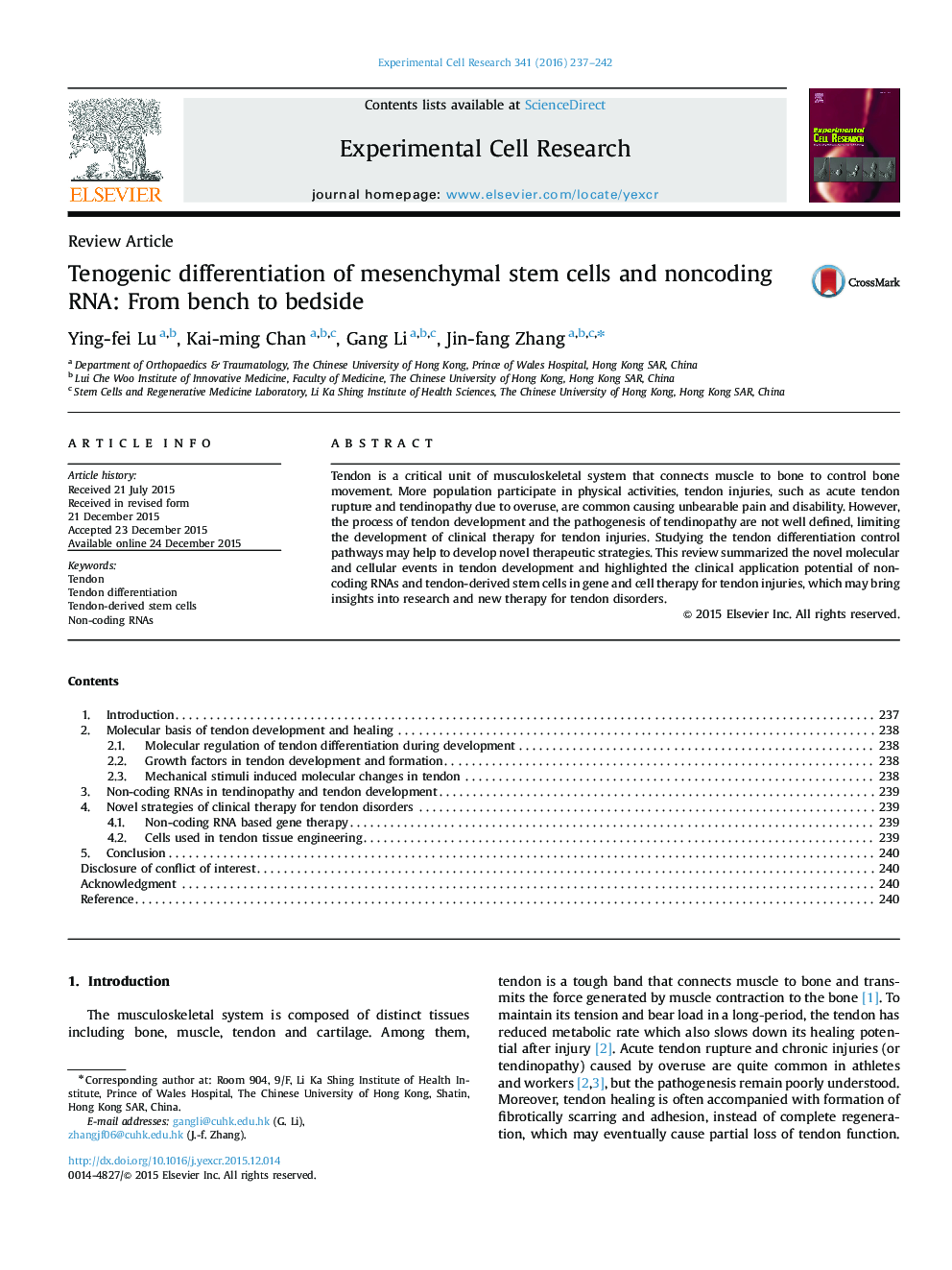| کد مقاله | کد نشریه | سال انتشار | مقاله انگلیسی | نسخه تمام متن |
|---|---|---|---|---|
| 2130005 | 1086516 | 2016 | 6 صفحه PDF | دانلود رایگان |
• Transcription, growth and mechanical factors are essential in tendon development.
• Non-coding RNAs play important roles in tendon healing and tendinopathy.
• Non-coding RNA- and TDSC-based therapy is new options for treating tendon injury.
Tendon is a critical unit of musculoskeletal system that connects muscle to bone to control bone movement. More population participate in physical activities, tendon injuries, such as acute tendon rupture and tendinopathy due to overuse, are common causing unbearable pain and disability. However, the process of tendon development and the pathogenesis of tendinopathy are not well defined, limiting the development of clinical therapy for tendon injuries. Studying the tendon differentiation control pathways may help to develop novel therapeutic strategies. This review summarized the novel molecular and cellular events in tendon development and highlighted the clinical application potential of non-coding RNAs and tendon-derived stem cells in gene and cell therapy for tendon injuries, which may bring insights into research and new therapy for tendon disorders.
Journal: Experimental Cell Research - Volume 341, Issue 2, 15 February 2016, Pages 237–242
